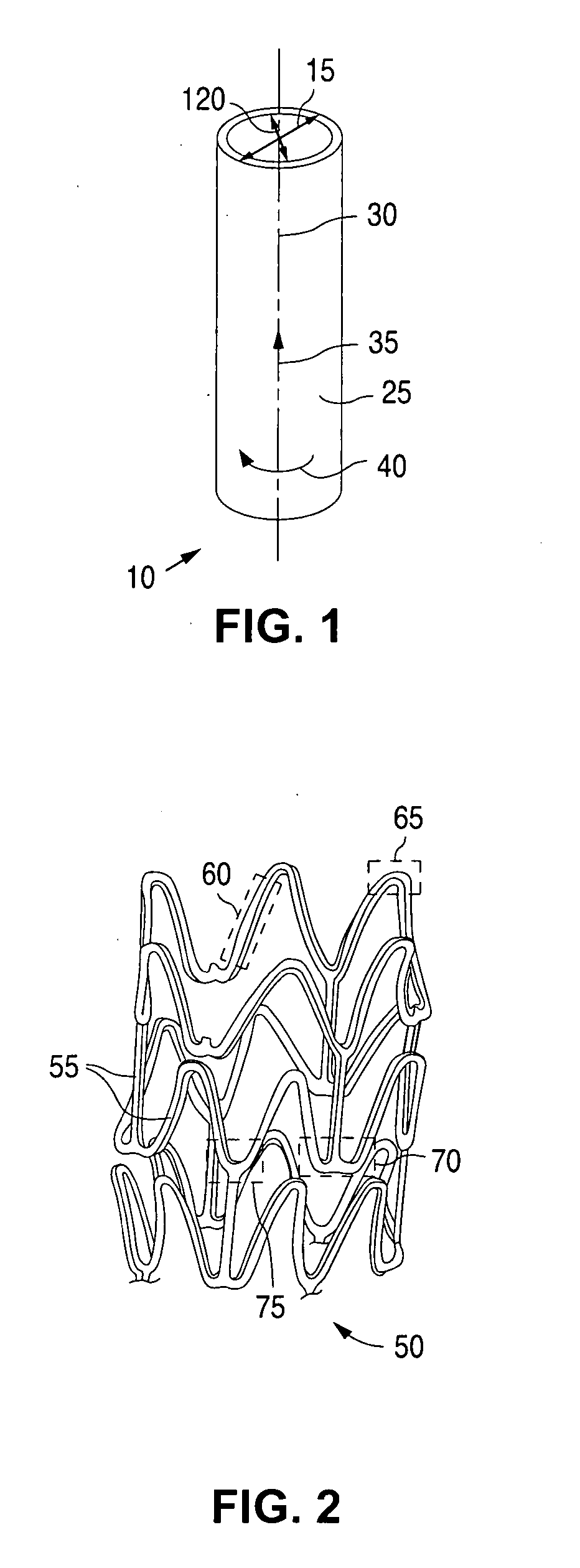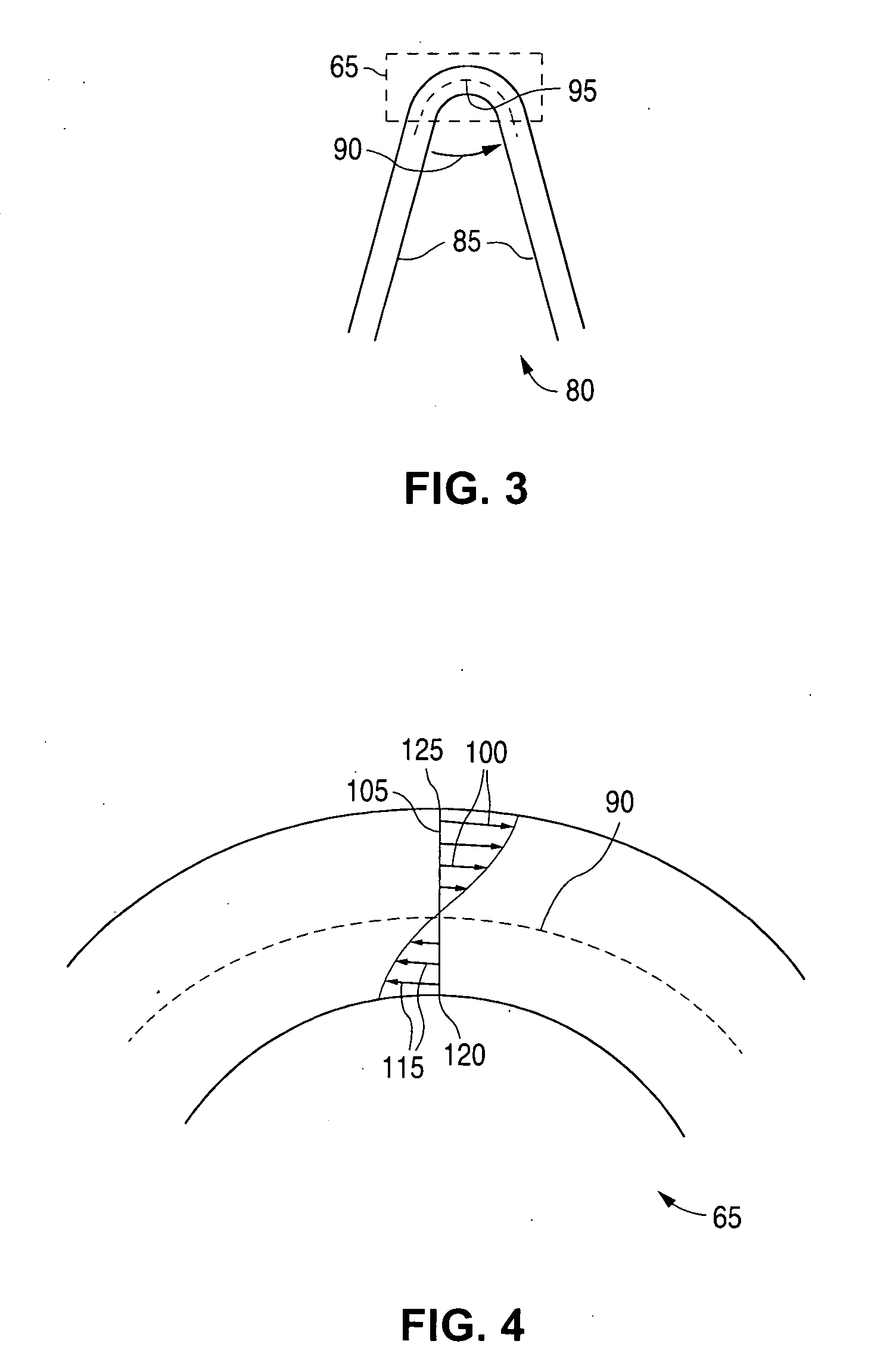Method of fabricating a biaxially oriented implantable medical device
a medical device and radial orientation technology, applied in the direction of surface layering apparatus, manufacturing tools, prosthesis, etc., can solve the problems of stent struts or bar arms cracking, localized portions of the stent pattern subject to substantial deformation tend to be the most vulnerable to failure, and inadequate radial strength
- Summary
- Abstract
- Description
- Claims
- Application Information
AI Technical Summary
Problems solved by technology
Method used
Image
Examples
Embodiment Construction
[0025] For the purposes of the present invention, the following terms and definitions apply:
[0026] The “glass transition temperature,” Tg, is the temperature at which the amorphous domains of a polymer change from a brittle vitreous state to a solid deformable or ductile state at atmospheric pressure. In other words, the Tg corresponds to the temperature where the onset of segmental motion in the chains of the polymer occurs. When an amorphous or semicrystalline polymer is exposed to an increasing temperature, the coefficient of expansion and the heat capacity of the polymer both increase as the temperature is raised, indicating increased molecular motion. As the temperature is raised the actual molecular volume in the sample remains constant, and so a higher coefficient of expansion points to an increase in free volume associated with the system and therefore increased freedom for the molecules to move. The increasing heat capacity corresponds to an increase in heat dissipation th...
PUM
| Property | Measurement | Unit |
|---|---|---|
| Temperature | aaaaa | aaaaa |
| Force | aaaaa | aaaaa |
| Pressure | aaaaa | aaaaa |
Abstract
Description
Claims
Application Information
 Login to View More
Login to View More - R&D
- Intellectual Property
- Life Sciences
- Materials
- Tech Scout
- Unparalleled Data Quality
- Higher Quality Content
- 60% Fewer Hallucinations
Browse by: Latest US Patents, China's latest patents, Technical Efficacy Thesaurus, Application Domain, Technology Topic, Popular Technical Reports.
© 2025 PatSnap. All rights reserved.Legal|Privacy policy|Modern Slavery Act Transparency Statement|Sitemap|About US| Contact US: help@patsnap.com



